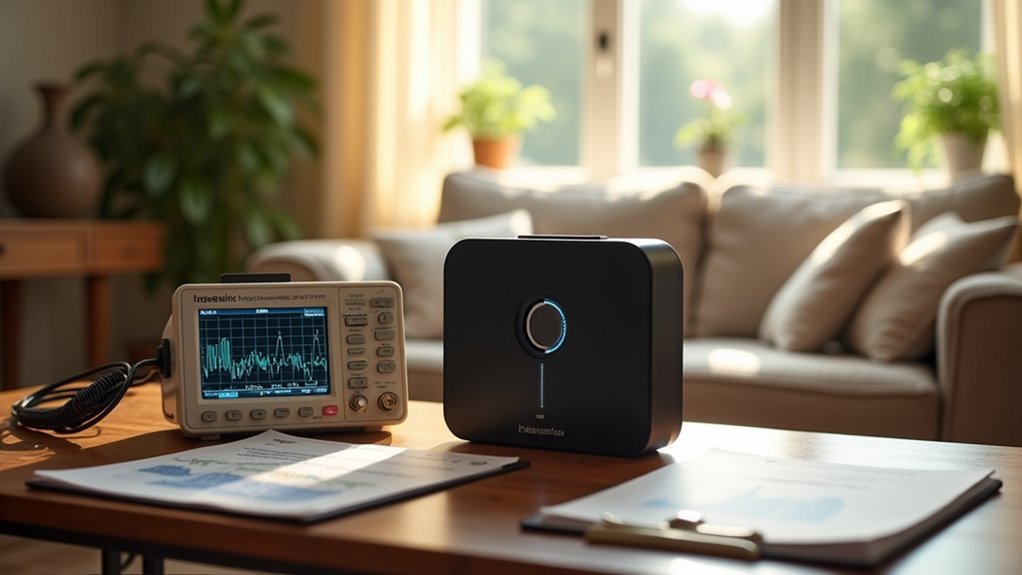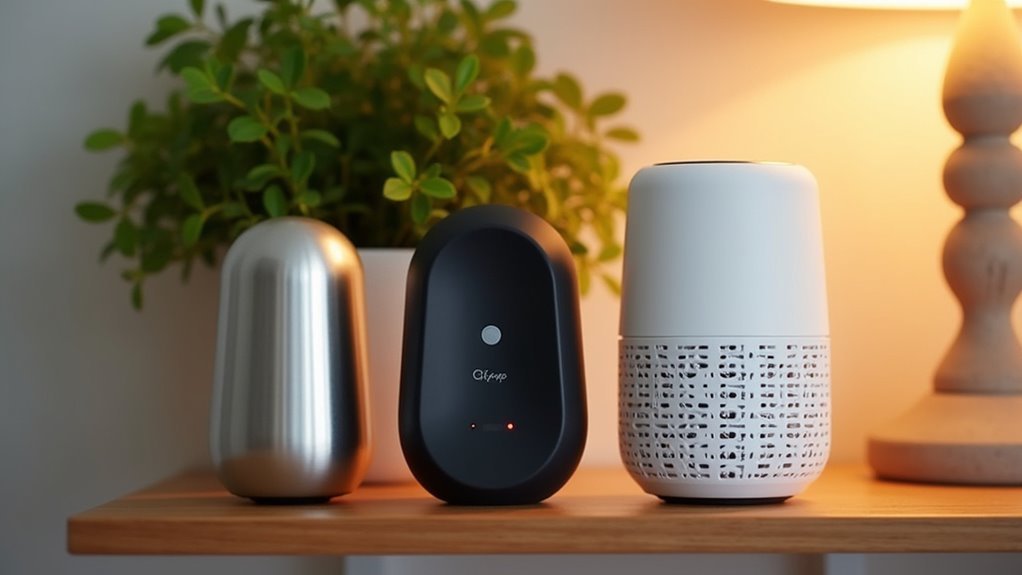You’ll find that ultrasonic pest repellers show mixed effectiveness, with studies revealing they work better on some pests than others. Kansas State University found these devices affected crickets but didn’t impact cockroaches at all. Their range is limited to 20-30 feet and walls or furniture block the sound waves. Premium models perform slightly better but still face the same limitations. You shouldn’t rely on them alone for serious infestations, and exploring thorough approaches will reveal more effective solutions.
Scientific Evidence and Testing Results for Top Ultrasonic Pest Repeller Models

When evaluating ultrasonic pest repellers, you’ll find that scientific evidence presents a complex picture of their effectiveness. Research consistently shows mixed results across different pest species.
Kansas State University’s study demonstrates this variability perfectly—their testing revealed measurable effects on crickets while cockroaches showed no significant response to ultrasonic frequencies.
You should know that these devices typically maintain an effective range of only 20-30 feet, with walls and furniture blocking sound waves.
The FTC has warned manufacturers about unsupported claims, even pursuing legal action against some companies marketing these pest control methods.
While some users report success against specific pests, the inconsistent scientific evidence suggests you shouldn’t rely solely on ultrasonic devices for serious pest infestation problems without considering professional pest control alternatives.
Real-World Performance Analysis of Leading Ultrasonic Pest Control Devices
Beyond laboratory findings, real-world performance data reveals significant variations in how ultrasonic pest repellers actually function in everyday home environments. Customer reviews show mixed results, with effectiveness largely dependent on pest species and environmental factors. While some users report decreased pest population around entry points, others question whether these pest repellents trigger any meaningful physiological response.
| Performance Factor | Real-World Impact |
|---|---|
| Range Limitation | 20-30 feet, obstructed by furniture |
| Pest Habituation | Effectiveness diminishes over time |
| Species Variation | Works on crickets, ineffective on cockroaches |
| User Satisfaction | Highly variable ratings and experiences |
Unlike what a pest control company might guarantee, scientific evidence suggests ultrasonic devices don’t consistently deter pests across all scenarios. You’ll find success rates vary dramatically based on your specific pest problem and home layout.
Comparative Effectiveness Study of Premium Ultrasonic Pest Repellers

Although premium ultrasonic pest repellers command higher prices and make bold claims about their effectiveness, controlled studies reveal a more nuanced picture of their actual performance.
Scientific research demonstrates that comparative effectiveness varies dramatically based on the particular pest you’re targeting and device design quality.
Key findings from controlled studies show:
- Kansas State University research confirmed high-frequency sounds repelled crickets but showed zero impact on cockroaches
- Premium devices claiming 20-30 feet range lose effectiveness when walls and furniture obstruct sound waves
- Pest habituation occurs over time, reducing long-term effectiveness greatly
- Species-targeted approaches prove more successful than broad-spectrum claims
- Customer reviews reflect mixed results, with pest control professionals recommending combined methods
You’ll find these devices work best as supplementary tools rather than standalone solutions for thorough pest management.
Frequently Asked Questions
Are There Any Ultrasonic Pest Repellers That Work?
You’ll find some ultrasonic pest repellers work against specific pests like crickets, but they’re generally ineffective against cockroaches, ants, and spiders. Their effectiveness diminishes over time as pests adapt.
Do the Electric Plug-In Pest Repellers Work?
Electric plug-in pest repellers show mixed results – you’ll find they’re somewhat effective against crickets but don’t work well on cockroaches or ants. Pests can adapt over time, reducing effectiveness.
What Are the Disadvantages of Ultrasonic Pest Repellers?
You’ll face limited range coverage, pest habituation reducing effectiveness over time, interference from walls and furniture, potential distress to small pets, and questionable reliability due to insufficient scientific evidence supporting manufacturers’ claims.
Do Ultrasonic Devices Really Repel Rodents?
You’ll find ultrasonic devices show mixed results against rodents. While some users report initial success, scientific evidence remains inconclusive. Rodents often adapt to the frequencies over time, making long-term effectiveness questionable.
In Summary
You’ll find mixed results when testing ultrasonic pest repellers. While some models show promise in controlled lab settings, they’re less effective in real-world applications. You shouldn’t rely on them as your sole pest control method. Instead, you’d get better results combining ultrasonic devices with traditional approaches like sealing entry points and removing food sources. Don’t expect miraculous results, but they can provide modest supplemental protection in specific situations.





Leave a Reply